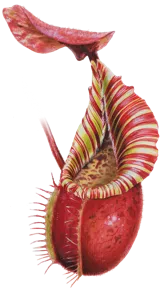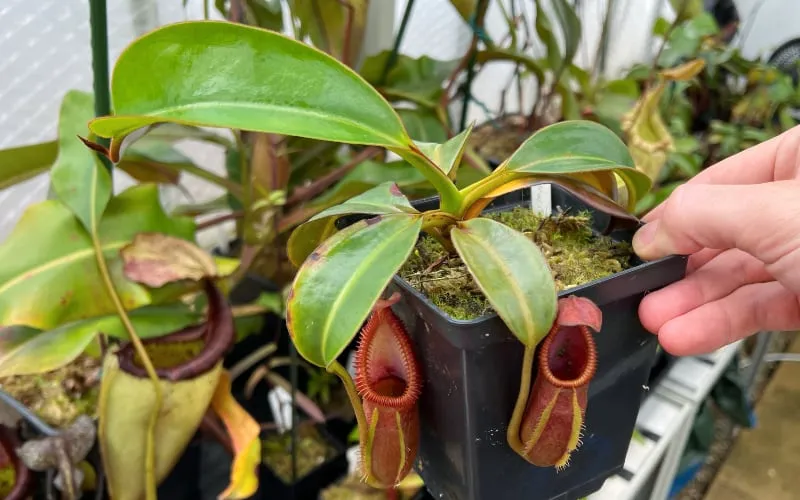If your tropical pitcher plant or ‘monkey cup’ isn’t making new pitchers, don’t worry - you’re not alone! This is one of the most common problems faced by growers.
Most tropical pitcher plants - known by their botanical name Nepenthes - are not difficult to grow, but they will stop producing pitchers if you don’t meet certain cultivation requirements. What’s more, there are also some completely normal reasons why your plant might temporarily stop producing pitchers.
In this guide I’ll run through five common causes, and offer tips on what you can do about each.
1. Low humidity
This is probably the most common issue I see. Tropical pitcher plants are montane plants native to the rainforests of Southeast Asia, and as such they enjoy higher levels of humidity than you might find in some homes.
A plant grown in a low humidity environment will often continue growing new leaves, but the tips or ‘buds’ of the leaves will not inflate into new pitchers:
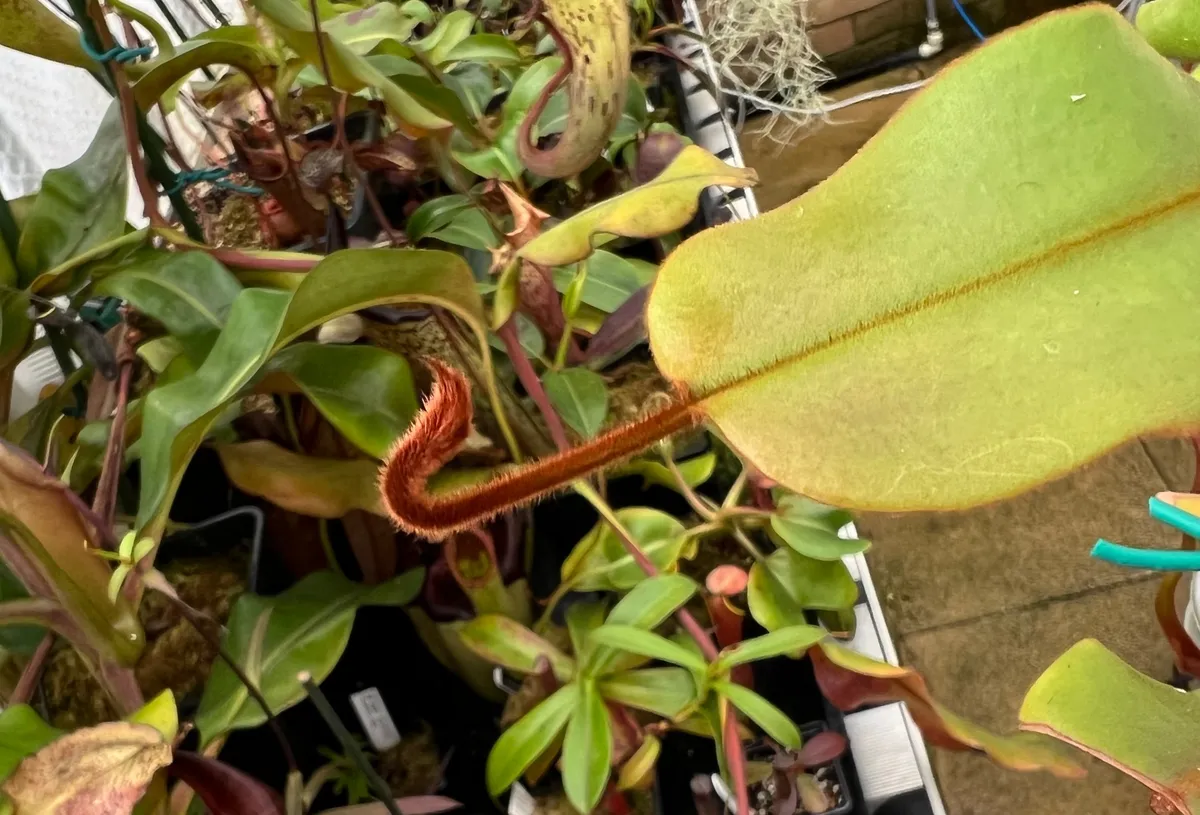
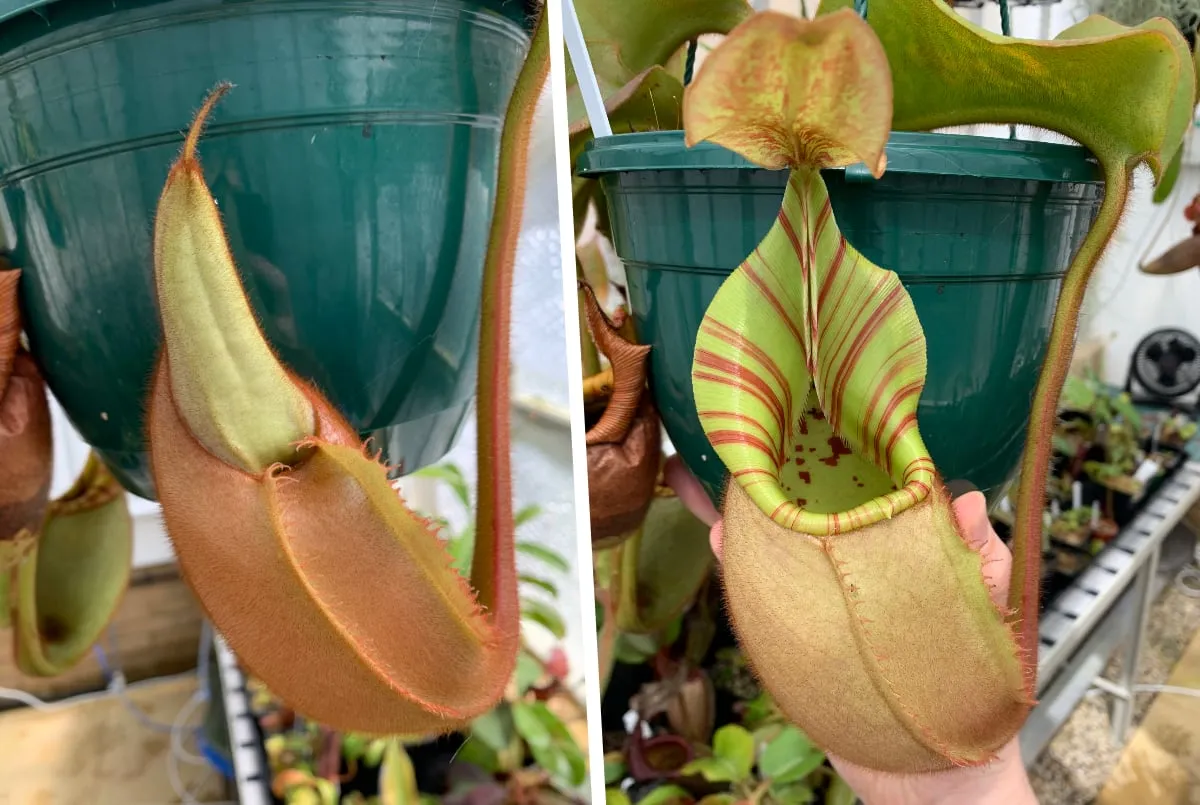
Some tropical pitcher plants are more tolerant of low humidity than others. Hybrids aimed at beginners like N. x ventrata and N. ‘Bloody Mary’ are generally very forgiving when it comes to humidity. Hybrids involving hirsute (hairy!) species like N. veitchii and N. glandulifera are also good options.
To raise humidity for windowsill plants, try misting them with water every day using a spray bottle and watering the soil little and often, to keep the media moist. Alternatively, try relocating your plants to a room which has a higher ambient humidity - I’ve had good success in my kitchen, where my Nepenthes are sat alongside dozens of other plants (which raises humidity further).
Finally, you could try a terrarium or grow tent. These are bigger undertakings and bring challenges of their own, such as airflow and fungal problems, but when built properly they can be a great place to grow smaller tropical pitcher plants.
2. Lack of light
Nepenthes like very bright light - not as much as a Venus flytrap or Sarracenia (in fact too much can burn Nepenthes leaves) - but partial sun is ideal. A gloomy windowsill can cause plants to stop producing pitchers.
This isn’t always a cause for concern. The shorter daylight hours of winter can cause a healthy tropical pitcher plant to slow its growth. I grow a Nepenthes glandulifera x veitchii on a windowsill in my house, and it tends to produce a nice crop of pitchers in Summer and Autumn but reverts to leafy growth in Winter.
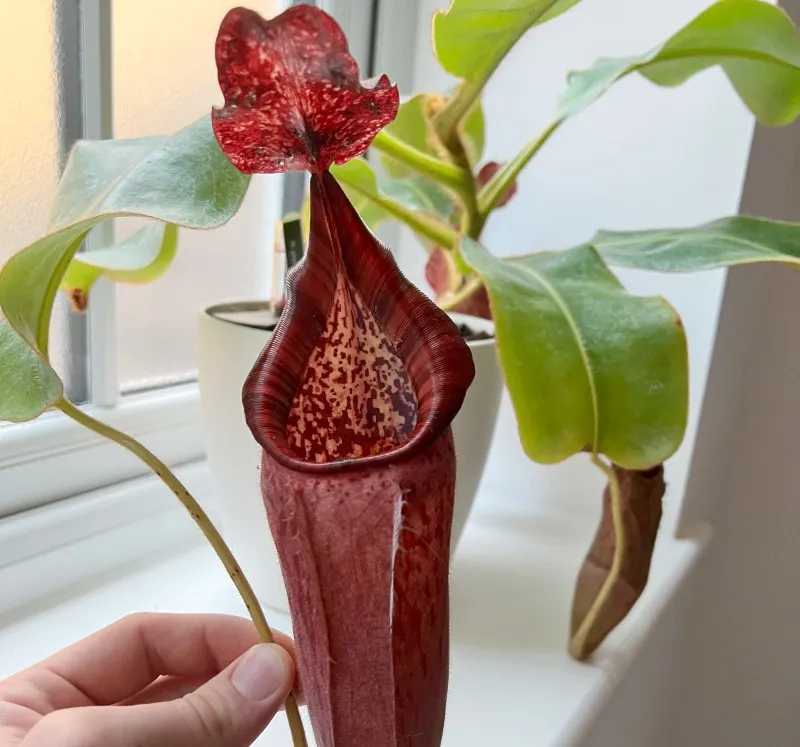
If you do relocate your plant to a new brighter location, remember that moving a plant can cause a degree of shock and cause its pitchers to go brown. Don’t try to feed your plant during this time. Just water it regularly with distilled water and watch closely for new growth in the weeks and months to come.
3. Climbing stems and upper pitchers
This is unlikely to be a problem for new plants, or those that are still small. But for plants that have been growing happily for some time, this is a common (and normal) occurrence.
Many Nepenthes have two distinct phases of growth: they start out as a prostrate rosette, producing pitchers which sit close to the ground, before producing a climbing stem which scrambles or climbs through the canopy. During the climbing stage, Nepenthes produce a vine - this is easy to spot because the gap between leaves gets much larger. When they’re vining, it’s normal for fewer pitchers to inflate - some tendrils will instead grasp onto nearby branches (or bamboo canes!) to support the plant in its climb, and never develop into pitchers.
In the photos below, I’ve tried to illustrate the two different growth modes using my Nepenthes glabrata as an example.
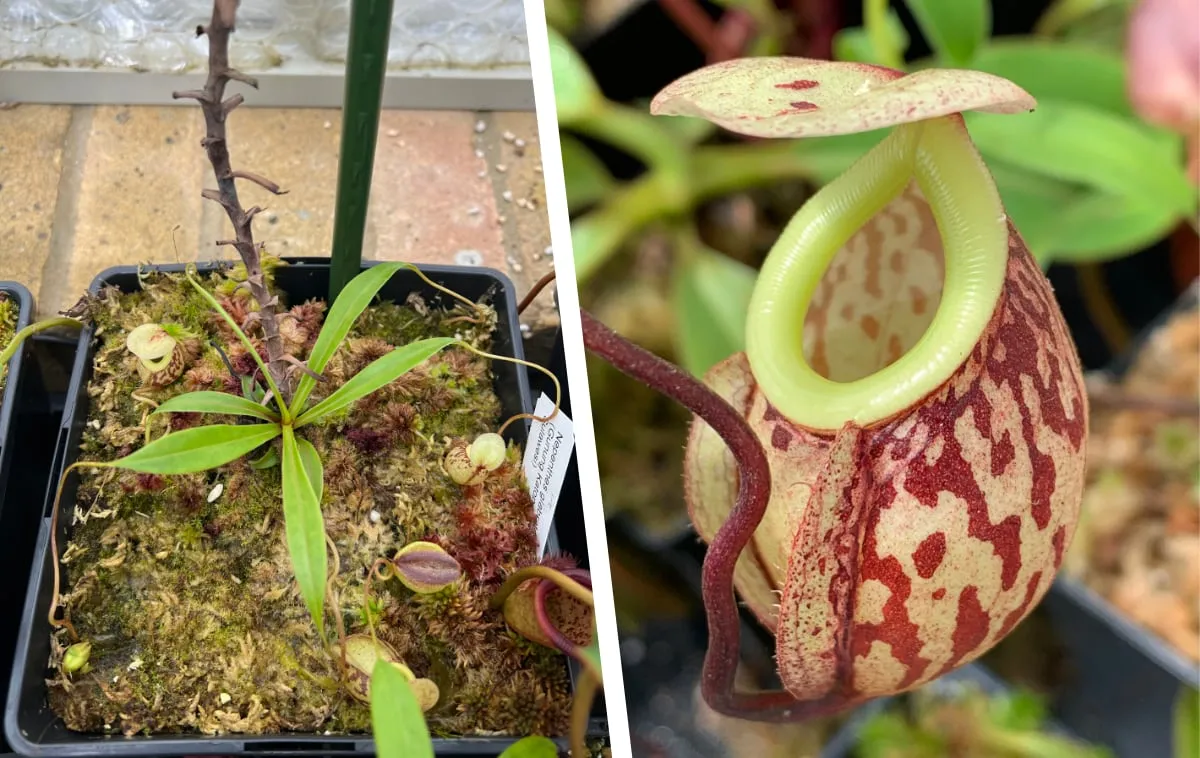
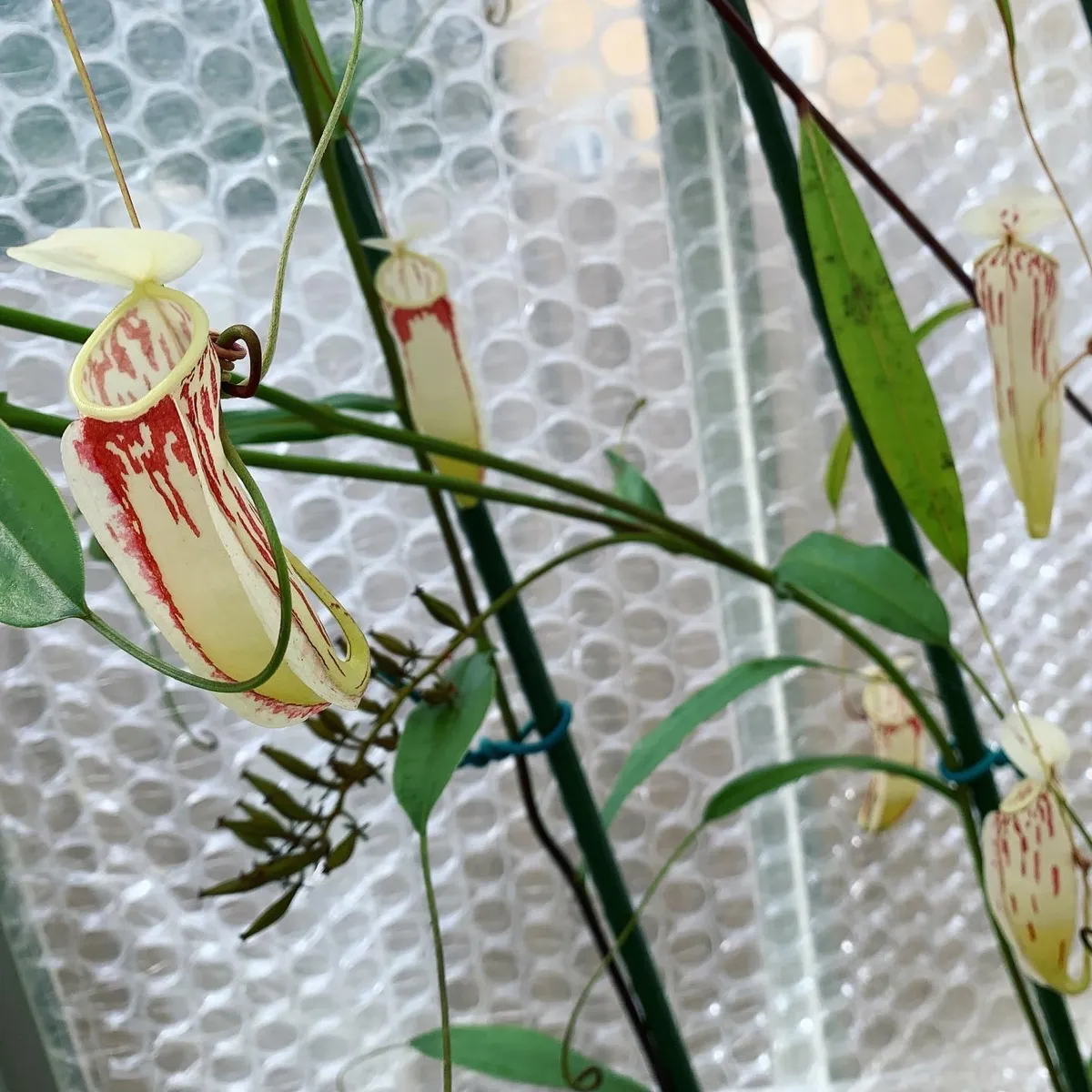
As you might notice, the pitchers produced during these two modes of growth can be strikingly different! This is because lower pitchers are specialised for capturing crawling prey, close to the forest floor, while upper pitchers are better suited to catching flying insects. You can read more about pitcher dimorphism over at In Defence of Plants.
4. Flowering
This is another one that’s generally only applicable to large, mature plants. I’ve found that flowering can sometimes be an exhausting process for Nepenthes, and one that can cause fewer pitchers to inflate.
Tropical pitcher plants are native to equatorial regions that have fairly stable conditions year-round. In cultivation, Nepenthes don’t usually flower on a predictable schedule like plants native to temperate climates. It varies by species, but in my experience some Nepenthes seem to flower whenever they feel like it! And when they do, they’ll sometimes stop producing pitchers for a few months afterwards.
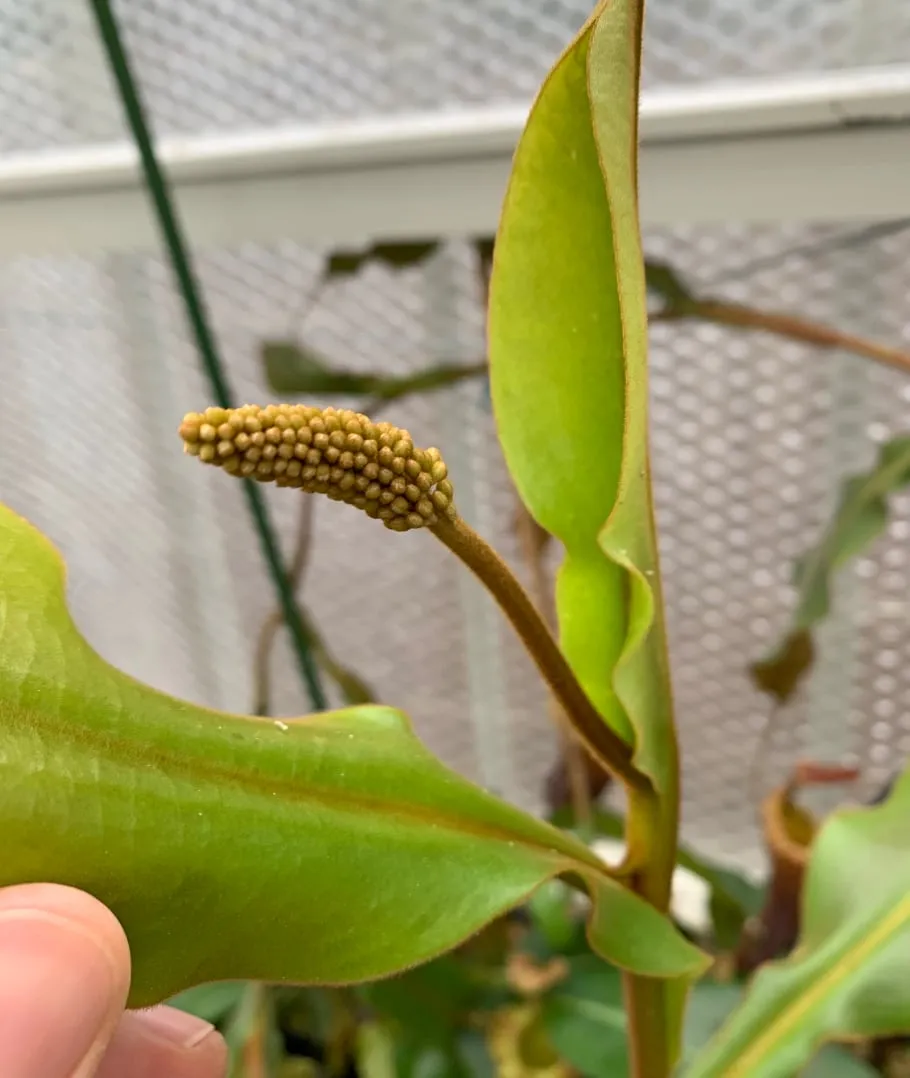
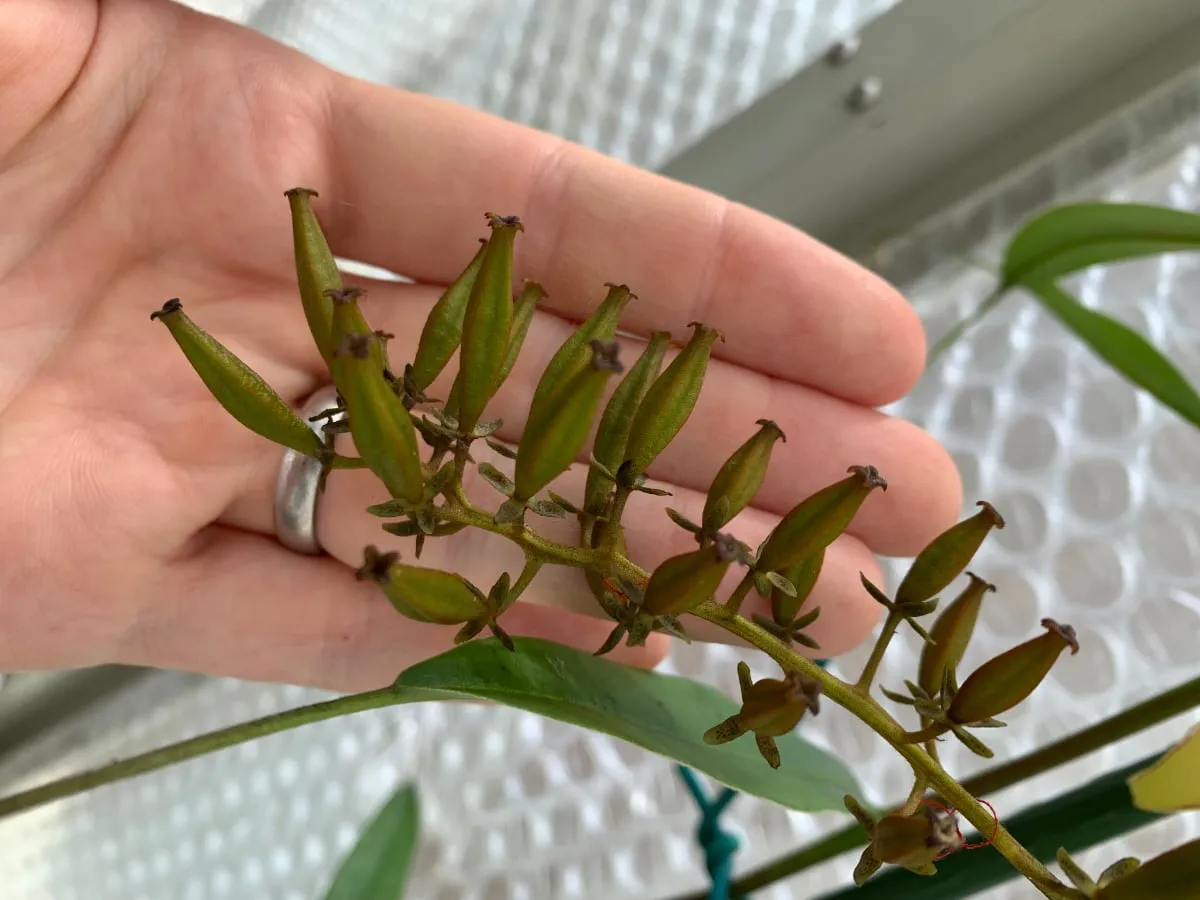
You might’ve noticed I referred to the plant above as female. This is because Nepenthes are extremely unusual among plants, in that they are dioecious: all individual plants are either male or female, so they cannot self-pollinate. Male plants produce pollen, the females receptive flowers, and you need one of each to produce viable seed!
5. Challenging species
There are over 170 species of tropical pitcher plant. Species and hybrids aimed at beginners are generally quite tolerant of the conditions in a typical home, but others are far fussier in their requirements.
Easy-pitchering cultivars that do well as houseplants include Nepenthes x ventrata and Nepenthes ‘Gaya’.
True highlanders - plants endemic to high elevations in the mountains - tend to require lower temperatures and very cool nights in order to thrive and produce attractive pitchers. You can learn how to care for tropical pitcher plants in my complete guide to Nepenthes.
I’d also suggest bookmarking my Nepenthes Interactive Guide, which includes a complete list of all 170 species and a calculator to help you determine the requirements of a specific plant.
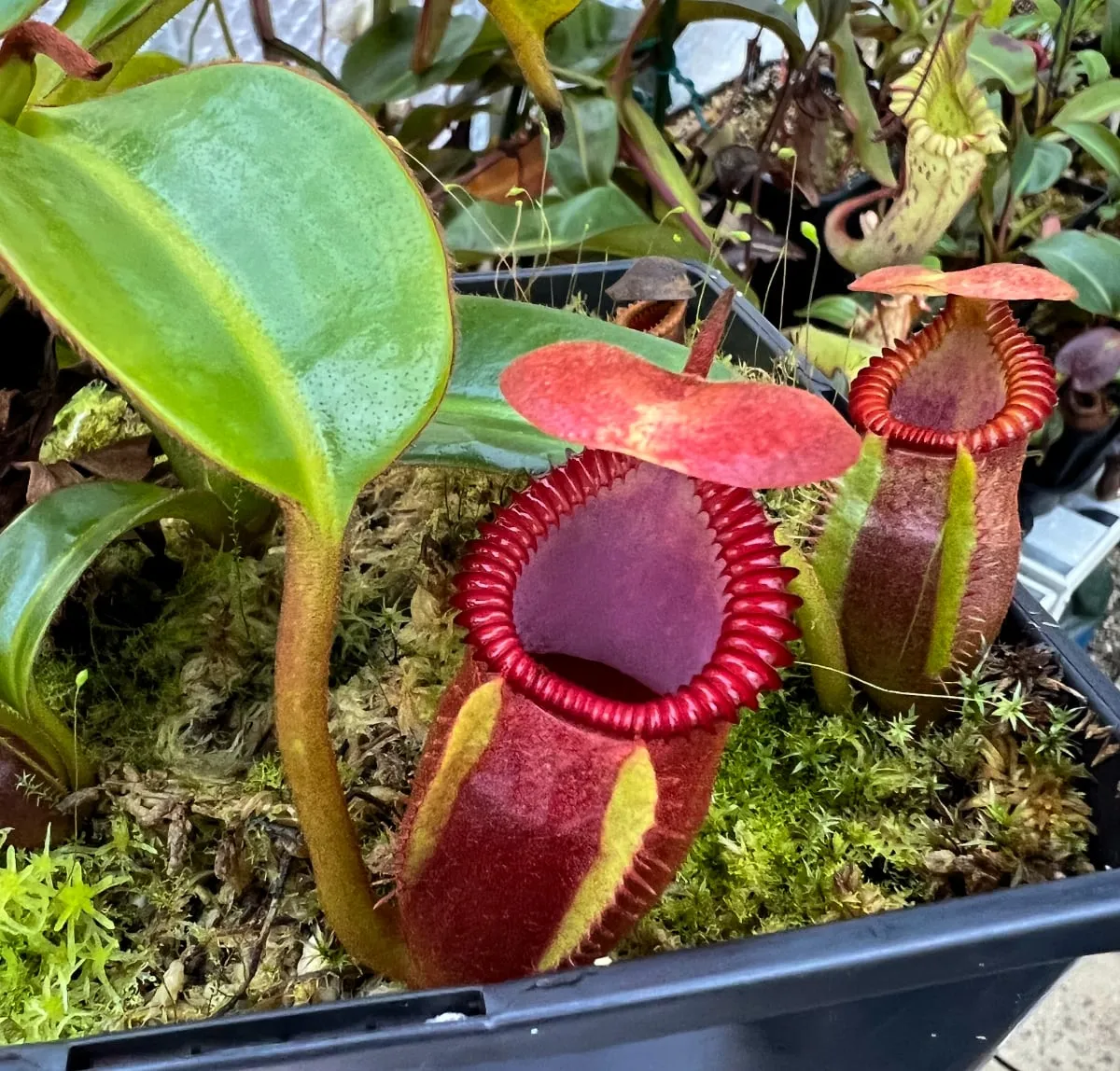
Whether you’re looking for a tolerant beginner’s plant or a rarer specialist item, you can find pitcher plants of all kinds at Hampshire Carnivorous Plants.
US readers will find Nepenthes suitable for growers of all abilities over at California Carnivores. They offer a huge range of flytraps, pitcher plants, and sundews available for delivery throughout the United States.
You can also get 10% off your order with the code tomscarnivores.
I hope this guide has been useful. What techniques have you found effective in getting your Nepenthes to produce pitchers? Let me know in the comments below.
